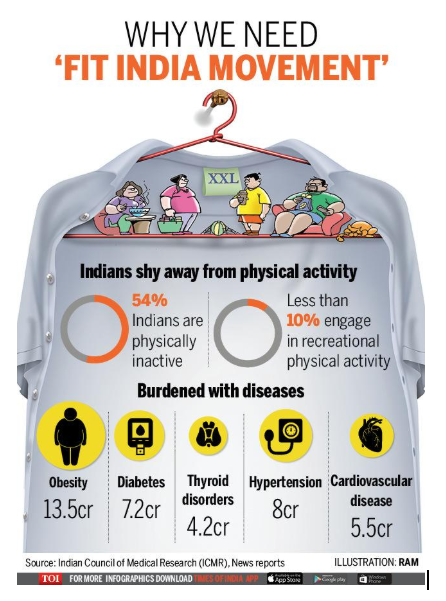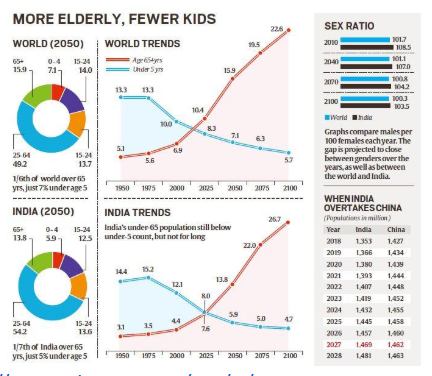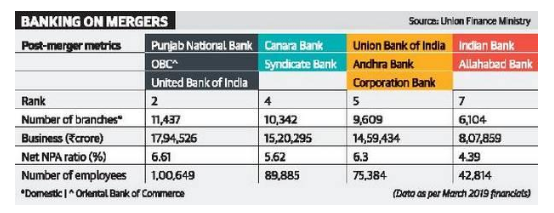IASbaba's Daily Current Affairs Analysis
IAS UPSC Prelims and Mains Exam – 31st August 2019
Archives
(PRELIMS + MAINS FOCUS)
Angikaar campaign
Part of: GS Prelims
In News
- The Union Housing and Urban Affairs Ministry has launched the ‘Angikaar campaign’.
- The campaign aims for social behaviour change, focusing on issues such as water & energy conservation, waste management, health, tree plantation, sanitation and hygiene for beneficiaries of completed houses under PMAY (U).
- The campaign will include door to door activities, ward and city level events.
- For this purpose, the campaign will converge with schemes and Missions of other Ministries dealing with these subjects, especially Ujjwala yojana for gas connection and Ayushman Bharat for health insurance.
- It will be initiated in all target cities on 2nd October 2019 and culminate on the occasion of Human Rights Day, 10th December, 2019.
Do You Know?
- PMAY- Urban envisions provision of Housing for All by 2022, when India completes 75 years of its Independence
- The scheme has following four verticals
- Slum rehabilitation of Slum Dwellers with participation of private developers using land as a resource.
- Promotion of Affordable Housing for weaker section through credit linked subsidy.
-
- Affordable Housing in Partnership with Public & Private sectors.
- Subsidy for beneficiary-led individual house construction /enhancement.
Fit India Movement
Part of: GS Prelims and Mains GS-II – Issues relating to Health
In News
- Prime Minister Narendra Modi launched the Fit India Movement on the occasion of National Sports Day.
- The campaign is aimed at encouraging people to integrate physical activity and sports in their everyday lives.
- Technology has contributed to a sedentary lifestyle which has led to increase in lifestyle diseases like diabetes & hypertension, thus fitness is the need of the hour.
- The 28-member government committee headed by Sports Minister has been formed to take the movement forward.
- National Sports Day is celebrated on 29th August, the birth anniversary of hockey legend Major Dhyan Chand.
- On this Day, President confers the National Sports Awards, National Adventure Awards, Arjuna Award, Khel Ratna, Dronacharya Award and Dhyanchand Award to recognise the exceptional achievements of Indian sportspersons.

https://static.toiimg.com/img/70891964/Master.jpg
UN Population report
Part of: GS Prelims and GS Mains I – Society
In News
- The World Population Prospects 2019 which gives global population estimates and projections was released by United Nations
- The world’s population is expected to increase from 7.7 billion currently to 9.7 billion in 2050 and the overall growth rate will continue to fall.
- The countries expected to show the biggest increase in population are India, Nigeria and Pakistan
- Also, fertility rates are falling worldwide from 3.2 in 1990 to 2.5 in 2019, and is projected to fall further to 2.2 births by 2050.
- In 2018, for the first time, persons aged 65 years or over worldwide outnumbered children under age five.
- By 2050, the number of persons aged 65 or over will also surpass the number of adolescents and youth aged 15-24.
- Life Expectancy (LE): Although overall LE will increase (from 64.2 years in 1990 to 77.1 years in 2050), LE in poorer countries is projected to continue to lag behind.
- Sex ratio: Males are projected to continue to outnumber females until the end of the century, but the gap will close

https://images.indianexpress.com/2019/06/one.jpg
Do You know?
- Early marriage, absence of reproductive and sexual rights has a major and negative repercussions on Indian women’s education, income, safety and their overall empowerment.
- India’s Maternal mortality ratio in 2015 was 174 deaths per lakh live births (down from 448 in 1994) while the global MMR in 2015 was 216.
- While 28 of every 1,000 Indian adolescent women (age 15-19) gave birth between 2006 and 2017, the global adolescent birth rate was at 44 per 1,000.
- India’s fertility rate in 2019 is 2.3 births per woman, compared to 2.5 worldwide
Mergers of Public sector banks(PSB)
Part of: GS Prelims and Mains GS-III – Economy
In News
- Government announced mega bank amalgamation plan that merged 10 PSBs into four larger entities
- Banks have been merged on the basis of likely operating efficiencies, better usage of equity, geographical synergies and their technological platform
- There are four new sets of mergers
- Punjab National Bank, Oriental Bank of Commerce and United Bank of India to merge to form the country’s second-largest lender. These three banks are technologically compatible as they use Finacle Core Banking Solution platform.
- Canara Bank and Syndicate Bank to amalgamate;
- Union Bank of India to acquire Andhra Bank and Corporation Bank;
-
- Indian Bank (Strong presence in South India) to merge with Allahabad Bank (strong presence in East & North India) – To maximise geographical synergies.
- Government also announced to infuse 55,250 crore in these banks to enable them to grow their loan book
- The government also unveiled governance reforms in PSB, providing their boards greater autonomy, flexibility to fix sitting fee of independent directors, longer term to directors at management committee of boards etc.
Do You Know?
- Out of the 10 banks that the government has decided to merge to create four, nine have net non-performing assets (NPAs) of over 5%.
- Government had merged Dena Bank and Vijaya Bank with Bank of Baroda on January 2019, creating the third-largest bank by loans in the country.
- With these series of mergers, the number of state-owned banks is down to 12 from 27.
- Narasimham Committee of 1998 had proposed a three-tier banking structure for India – Three large banks of international size, eight to 10 national banks and a large number of regional banks.

(MAINS FOCUS)
ECONOMY
TOPIC: General Studies 2
- Government policies and interventions for development in various sectors and issues arising out of their design and implementation.
The public sector bank merger
Context:
- The Centre Friday announced a mega amalgamation plan, the third in a row, that merged ten public sector banks into four larger entities, alongside board level governance reforms aimed at improving their financial health and enhancing their lending capacity to support growth.
The public sector bank merger
- The merger announcement was followed by an equity infusion move of Rs 55,250 crore in these banks to enable them to grow their loan book. With these series of mergers, the number of state-owned banks is down to 12 from 27.
There are four new sets of mergers —
- Punjab National Bank, Oriental Bank of Commerce and United Bank of India to merge to form the country’s second-largest lender;
- Canara Bank and Syndicate Bank to amalgamate;
- Union Bank of India to acquire Andhra Bank and Corporation Bank; and
- Indian Bank to merge with Allahabad Bank.
- The biggest merger out of the four was Oriental Bank of Commerce and United Bank merging into Punjab National Bank to create a second largest state-owned bank with Rs 17.95 lakh crore business and 11,437 branches. These three banks are technologically compatible as they use Finacle Core Banking Solution (CBS) platform
- The merger of Syndicate Bank with Canara Bank will create the fourth largest public sector bank with Rs 15.20 lakh crore business and a branch network of 10,324 branches. Canara Bank will get capital infusion of Rs 6,500 crore.
- Andhra Bank and Corporation Bank’s merger with Union Bank of India will create India’s fifth largest public sector bank with Rs 14.59 lakh crore business and 9,609 branches. The government announced capital infusion of Rs 11,700 crore for the Union Bank of India.
- The merger of Allahabad Bank with Indian Bank will create the seventh largest public sector bank with Rs 8.08 lakh crore business with strong branch networks in the south, north and east of the country. Indian Bank will get equity infusion of Rs 2,500 crore.
The logic behind the mergers
- According to the government, banks have been merged on the basis of likely operating efficiencies, better usage of equity and their technological platform.
- But the move marks a departure from the plan to privatise some of the banks or bringing in a strategic investors to usher in reform in the sector.
- The government, after consultations, decided that amalgamation is the “best route” to achieve banking sector scale and to support the target of achieving a $5 trillion economic size for India in five years
Previous bank mergers
- Last year, the government had merged Dena Bank and Vijaya Bank with Bank of Baroda, creating the third-largest bank by loans in the country.
- Earlier, the State Bank of India had acquired its associate banks
How this move will help?
- The Banking sector as a whole will get strengthened due to obvious efficiencies and will lead to enhanced productivity and better results thereby leading to better lending too
- The mergers should help create stronger institutions thereby leading to efficiencies of scale and stronger balance sheets.
- It will help rationalize costs across many areas including branches, people, technology etc.
- The branch network would become larger so access to bank branches would become easier provided the merged entity does not shut down all branches of merging banks
Connecting the dots:
- More than banks, it is the operation of banks is what creates the financial inclusion. Discuss the impact on banking sector with merging
- Why is the government keen on consolidating the banks? Are there any merits of merging the banks to create banking behemoths? Critically evaluate
(TEST YOUR KNOWLEDGE)
Model questions: (You can now post your answers in comment section)
Note:
- Featured Comments and comments Up-voted by IASbaba are the “correct answers”.
- IASbaba App users – Team IASbaba will provide correct answers in comment section. Kindly refer to it and update your answers.
Q.1) Consider the following statements
- Merging of Public Sector banks will improve operating efficiencies, lead to better usage of equity, enhance geographical synergies and helps tackle rising NPA problem.
- With the recent mergers of Public sector banks, the number of state-owned banks is reduced from 27 to 12.
- Narasimham Committee of 1998 had proposed a two-tier banking structure for India – Three large banks of international size and eight to 10 national banks
Which of the statement(s) given above is/are correct?
- 1and 2 only
- 2 and 3 only
- 1 and 3 only
- 1,2 and 3
Q.2) Consider the following statements
- The World Population Prospects 2019 which gives global population estimates and projections is released by World Economic Forum
- India’s present Maternal Mortality ratio and adolescent birth rate is higher than the corresponding global ratio/rate.
- India’s fertility rate in 2019 is 2.3 births per woman, compared to 2.5 worldwide
Which of the statement(s) given above is/are incorrect?
- 1 and 2 only
- 2 and 3 only
- 1 and 3 only
- 1,2 and 3
Q.3) Consider the following statements
- Fit India movement is aimed at encouraging people to integrate physical activity and sports in their everyday lives.
- National Sports Day is celebrated on 29th August, the birth anniversary of hockey legend Major Dhyan Chand.
Which of the statement(s) given above is/are correct?
- 1 only
- 2 only
- Both 1 and 2
- Neither 1 nor 2
Q.4) Angikaar campaign is being implemented by which Union Ministry?
- Ministry of Social Justice & Empowerment
- Ministry of Tribal affairs
- Union Housing and Urban Affairs Ministry
- None of the above
Must Read
GDP growth contracts to 5%, slowest in six years; Govt says more boosters coming
Liberalism runs into national populism
Hope and hurt in Ladakh
What’s Boris Johnson’s Brexit strategy?














